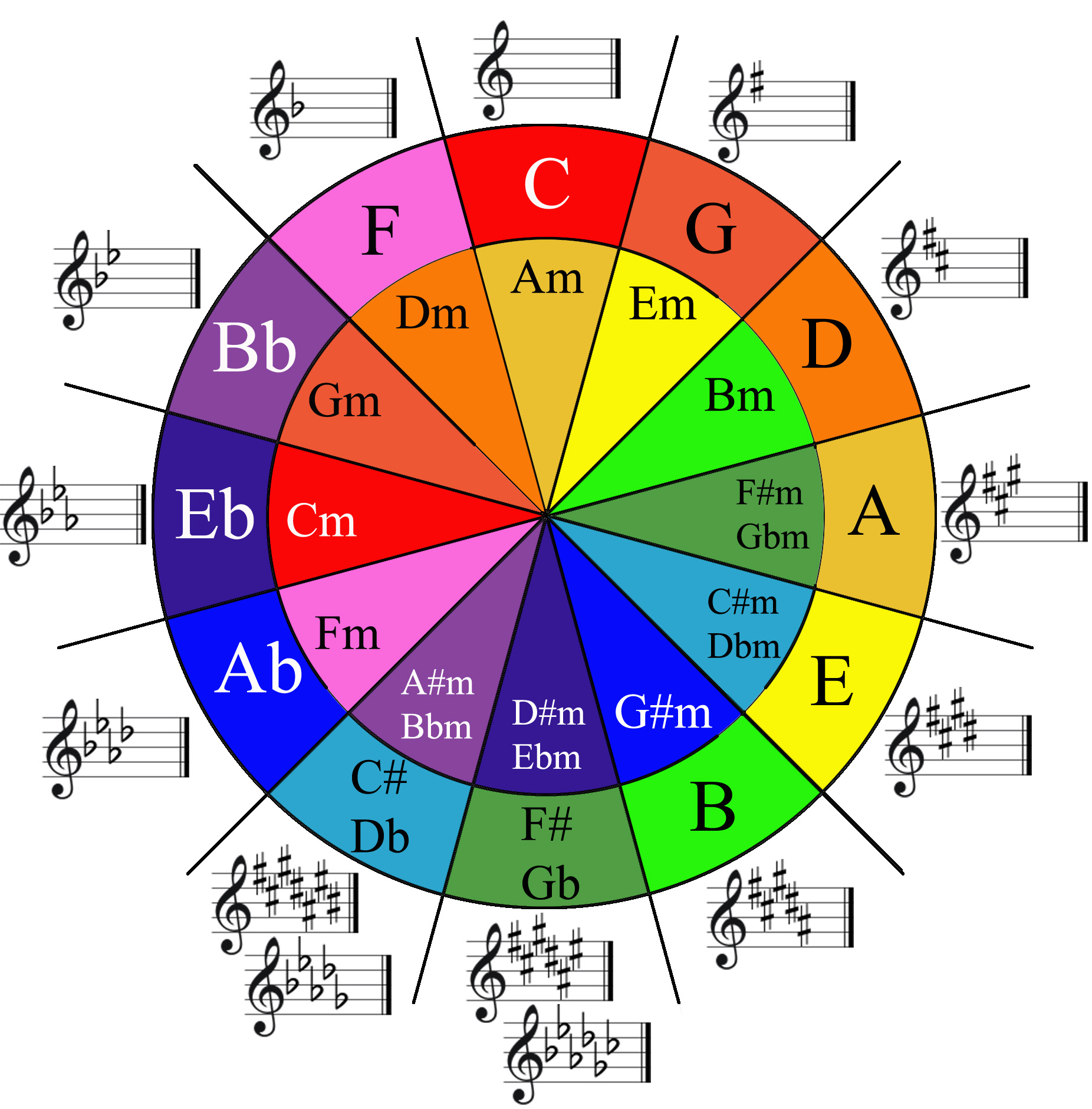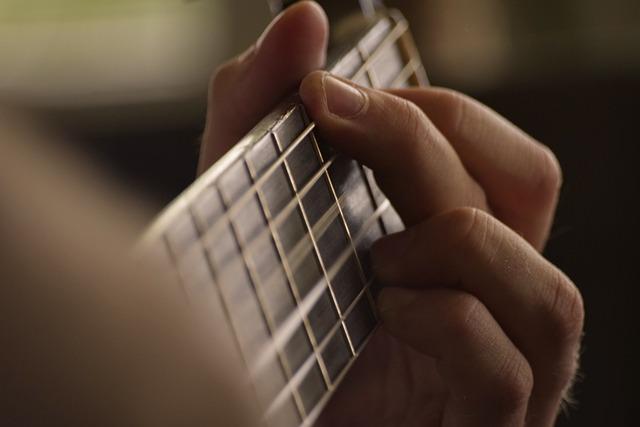Are you tired of strumming the same old boring chords on your guitar? Do you crave the thrill of mastering intricate chord progressions that will make your fingers dance across the fretboard like never before? Well, strap in and get ready to elevate your guitar skills to a whole new level because we’re about to dive into the world of complex chord progressions for advanced guitarists. So grab your guitar, a cup of coffee (or something stronger if you need it), and let’s rock and roll our way through some mind-bending chord changes that will make even the most seasoned guitarists break a sweat.
Contents
- 1 Exploring the Foundation of Intricate Chord Progressions
- 2 The Role of Music Theory in Advanced Chord Construction
- 3 Techniques for Seamlessly Integrating Complex Chords
- 4 Navigating Modulations and Key Changes with Precision
- 5 Applying Extended Chords and Altered Harmonies in Context
- 6 Mastering the Art of Finger Placement for Fluent Transitions
- 7 Incorporating Advanced Chord Progressions into Your Musical Repertoire
- 8 FAQs
- 9 Time to Rock Out with Your Chords Out!
Exploring the Foundation of Intricate Chord Progressions
Have you ever found yourself lost in the labyrinth of chord progressions, trying to unravel the mysteries of music theory? Fear not, dear reader, for we are here to guide you through the tangled web of notes and scales that make up the foundation of intricate chord progressions. So buckle up, grab your guitar or keyboard, and let’s dive into the fascinating world of harmonies and melodies!
First things first, let’s talk about the holy trinity of chord progressions: the tonic, subdominant, and dominant. These three chords are the backbone of most musical compositions, guiding listeners through a rollercoaster of emotions and resolutions. Think of them as the OGs of the music world, setting the stage for all the other chords to shine.
Now, let’s add some spice to our chord progressions with some juicy extensions and alterations. From suspended fours to diminished sevenths, there’s a whole buffet of flavors to choose from. Mix and match different chord voicings to create your signature sound and dazzle your audience with your musical prowess. Just remember, with great power chords comes great responsibility!
As you venture deeper into the world of intricate chord progressions, don’t forget to experiment, make mistakes, and have fun along the way. Music is all about exploration and self-expression, so don’t be afraid to break the rules and march to the beat of your own drum (or keyboard)! Who knows, you might just stumble upon a chord progression so magical, it makes angels weep and demons dance. So go forth, brave musician, and conquer the musical cosmos with your dazzling chord wizardry!

The Role of Music Theory in Advanced Chord Construction
So, you think you’re a chord construction connoisseur, huh? Well, let’s talk about the unsung hero of advanced chord creation – music theory! Without a solid understanding of music theory, your chord progressions might as well be random notes mashed together like a child banging on a piano.
With music theory as your trusty sidekick, you’ll be able to unlock the secrets of complex chord structures that will have your listeners begging for more. Say goodbye to basic triads and hello to extended chords that will make your compositions sound like they were written by a musical genius.
By delving into the world of music theory, you’ll be able to spice up your chord progressions with inversions, suspensions, and substitutions that will take your listeners on a musical journey they’ll never forget. So why settle for mediocrity when you can elevate your chord construction game to new heights with the power of music theory?
So, the next time you sit down at your piano or pick up your guitar, remember the role that music theory plays in constructing advanced chords. Embrace the magic of music theory and watch as your compositions transform from amateur hour to chart-topping hits. Who knew that a little bit of theory could make such a big difference?

Techniques for Seamlessly Integrating Complex Chords
When it comes to integrating complex chords into your music, it can sometimes feel like trying to fit a square peg into a round hole. But fear not, there are techniques you can use to seamlessly weave these intricate harmonies into your compositions.
One trick is to break down the chord into its individual notes and then gradually incorporate them into your playing. This allows you to get comfortable with each note before tackling the chord as a whole. Think of it like getting to know each member of a dysfunctional family before trying to bring them all together at Thanksgiving dinner.
Another handy technique is to experiment with different voicings of the chord. By changing the order in which the notes are played, you can create new and interesting sounds that may better suit the vibe of your song. It’s like trying on different outfits until you find the perfect one for a special occasion - except in this case, the outfit is a chord progression and the special occasion is your killer guitar solo.
And don’t be afraid to add some spice to your chords by incorporating passing tones or extensions. These can add flair and complexity to your music, like throwing in an unexpected plot twist to keep your listeners on their toes. Just remember, a little goes a long way – nobody wants a chord progression that’s more convoluted than a soap opera plotline.

So you’re ready to take on the challenge of , huh? Well, strap in because it’s about to get wild!
First things first, remember that modulations can occur in a variety of ways – sometimes subtly, sometimes dramatically. Keep your ears open and be ready to adapt like a musical chameleon.
When faced with a key change, don’t panic! Take a deep breath and remember these key tips:
- Identify the new key: Listen carefully for any clues or cues that signal the change.
- Adjust your playing: Make sure you’re familiar with the new key’s scale and chords to seamlessly transition.
- Stay confident: Own that key change like the musical maestro you are - no room for doubt here!
With a bit of practice and a whole lot of confidence, you’ll soon be a pro at . So go forth, brave musician, and conquer those musical twists and turns!

Applying Extended Chords and Altered Harmonies in Context
So you’ve mastered your basic chords and are now ready to take your music to the next level by incorporating extended chords and altered harmonies. Congratulations, you’re about to sound fancier than a French poodle at a high-society tea party!
Extended chords, such as 9ths, 11ths, and 13ths, add a rich, complex sound to your music that will make your listeners sit up and take notice. Think of them as the musical equivalent of adding extra toppings to your pizza – sure, plain cheese is good, but why not throw some pepperoni, mushrooms, and pineapple on there too?
Altered harmonies, on the other hand, are like adding a little spice to your music. By raising or lowering certain notes in your chords, you can create tension and interest that will keep your audience on the edge of their seats. It’s like the musical equivalent of a plot twist in a soap opera – unexpected, but oh so satisfying.
So go forth, brave musician, and experiment with these new tools in your musical toolbox. Mix and match your extended chords and altered harmonies like a mad scientist in a lab, and watch as your music takes on a whole new life of its own. Who knows, you may just discover the secret recipe for a hit song!
Mastering the Art of Finger Placement for Fluent Transitions
Picture this: you’re mid-song, fingers flying across the fretboard like a pro, but suddenly, you hit a wall. Your fingers stumble, the transitions are choppy, and your once-fluent playing sounds more like a toddler banging on pots and pans. Fear not, dear guitarist, for mastering the art of finger placement is the key to unlocking smooth, seamless transitions. Let’s dive into some tips and tricks to help you level up your finger placement game!
First and foremost, remember that practice makes perfect. Just like trying to wrangle a pack of unruly kittens, your fingers need time to get in line and work together harmoniously. Set aside dedicated practice sessions to focus specifically on finger placement and transitions. Trust me, your fingers will thank you later.
Next up, pay attention to your hand positioning. Are your fingers flying all over the place like a spider on caffeine? Take a deep breath, relax your grip, and ensure that each finger is assigned to its designated fret. Remember, a well-organized finger is a happy finger. Keep them in line, and your transitions will flow like a river.
Lastly, don’t be afraid to mix things up and experiment with different finger combinations. **Break the rules** and try unconventional finger placements to see what works best for you. After all, it’s your unique playing style that will set you apart from the crowd. So go forth, brave guitarist, and conquer the fretboard with confidence and finesse!
Incorporating Advanced Chord Progressions into Your Musical Repertoire
So you’ve mastered the basic chords and are ready to take your musical talents to the next level? Look no further than incorporating advanced chord progressions into your repertoire!
One of the most popular advanced chord progressions is the ii-V-I progression. This progression adds a jazzy twist to your music and can impress even the snobbiest of music critics. It consists of the second, fifth, and first chords in a key, creating a sweet and sophisticated sound that will have your audience swooning.
Another fun progression to try is the vi-IV-I-V progression. This sequence of chords is guaranteed to get your listeners’ toes tapping and hips swaying. It has a catchy, upbeat feel that will keep your audience engaged and eager for more.
Don’t be afraid to experiment with different chord progressions and mix them up to create your own unique sound. The possibilities are endless, and you never know what magical melodies you might stumble upon. So go forth and dazzle the world with your newfound chord progression knowledge!
FAQs
Q: How can I improve my understanding of complex chord progressions?
Well, first and foremost, put in the hours of practice. But also, don’t be afraid to take apart those intricate progressions, analyze them and understand why they work. Think of it like dissecting a frog, but way more musical.
Q: What are some tips for transitioning smoothly between challenging chords?
Like a ninja in the night, you must practice your chord transitions until they are seamless. Slow it down, focus on each finger placement, and before you know it, you’ll be switching between chords faster than you can say ”G# minor 7 flat 5.”
Q: How can I add my own flair to complex chord progressions?
Don’t just play the chords as written on the sheet music. Experiment with different voicings, add some embellishments, throw in a fancy lick or two. Make those chord progressions your own, like a rebellious teenager coloring outside the lines.
Q: Is it important to understand music theory when tackling intricate chord progressions?
Yes, knowing some music theory can definitely help you make sense of those complex chords. But hey, if you prefer to fly by the seat of your pants and just let your fingers do the talking, that works too. Just don’t blame us if you end up in chord progression purgatory.
Q: How can I stay motivated when mastering intricate chord progressions?
Reward yourself with a cookie after every successful chord change. Or maybe treat yourself to a new guitar pedal once you nail that particularly tricky progression. Find what motivates you and use it to power through the tough times. Remember, there’s light at the end of the chord progression tunnel!
Time to Rock Out with Your Chords Out!
Congratulations, you’ve now reached the level of guitar wizardry where complex chord progressions bend to your will like never before! From jazzy jazz to funky funk, you’re ready to unleash a symphony of strings that will have audiences bowing down in awe.
So go forth, fearless fretboard warrior, and conquer those intricate chord progressions with the finesse and flair of a rockstar. Remember, practice makes perfect, but a little bit of attitude never hurts either. Keep jamming, keep shredding, and most importantly, keep rocking on! 🤘🎸



